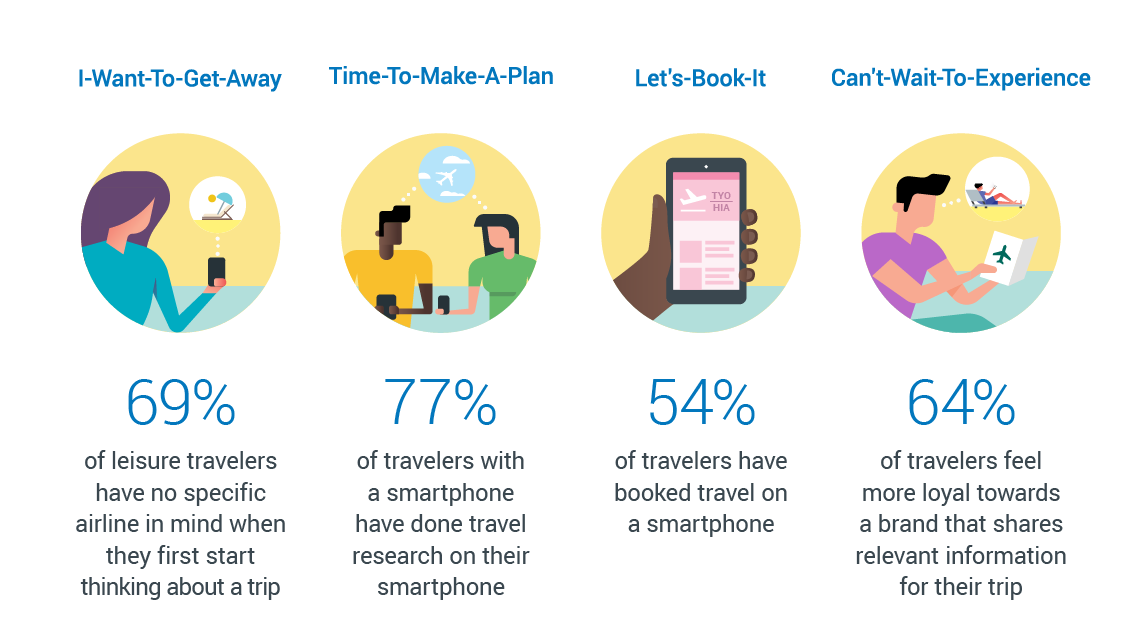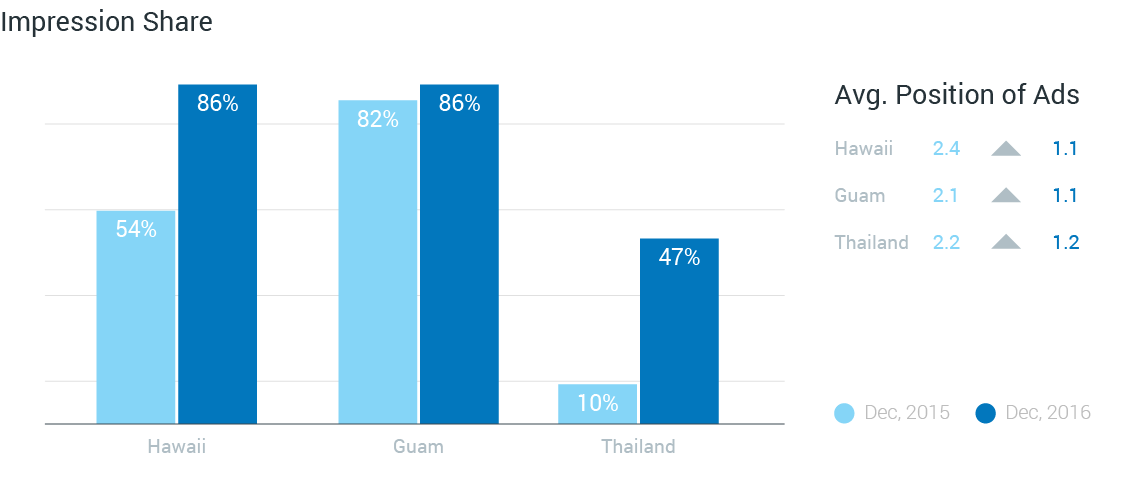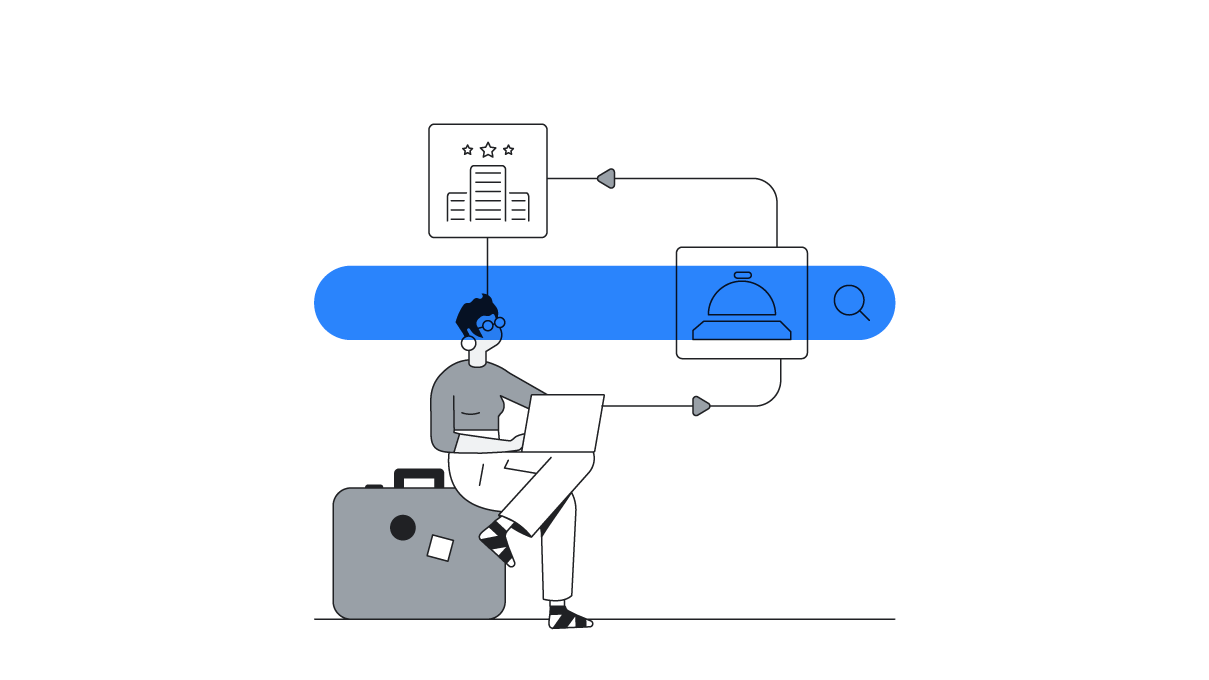When prospective travelers first start dreaming about their next trip, they usually turn to their phones for inspiration and information. As brands compete to meet these consumers in these micro-moments, Google’s automation solutions offer opportunities to influence them higher up the purchase funnel. Here, we share how Japan’s H.I.S., a popular travel agency and tour-booking company, used data-driven attribution (DDA) in conjunction with dynamic search ads (DSA) and automated bidding to serve ads in the early stages of trip planning—and how the company’s doing so ultimately boosted conversions.
From the moment a consumer in Japan first thinks, “I could use some sun” to the minute their toes hit the sand, they turn to the web with intent in their micro-moments. Now, with the help of search data, consumer surveys, and new tools that include automation solutions, brands can understand—and meet—consumers across a series of moments that occur during the early stages of their purchase journeys.
1. I-want-to-get-away moments: Travelers with wanderlust usually begin by heading to search to find out more about popular destinations, using such queries as "islands to visit in January" or "best Hawaiian islands.” At this point, 69% of users have not yet decided which specific airlines to use.
2. Time-to-make-a-plan moments: Once they’ve picked a location, next comes researching flights and accommodations with searches such as "best ways to get to Hawaii" or "Honolulu hotels." At this stage, 77% of users say they’ve used a smartphone to search for information when planning a trip.1
3. Let's-book-it moments: When booking a trip, travelers search for prices, vacancies, and other information, such as "cheap airfare to Hawaii" or "Hawaiian Airlines open seats." In these moments, 54% of travelers say they have made reservations with a smartphone.1
4. Can't-wait-to-experience moments: Micro-moments don't end when the trip is booked. Travelers continue searching for fun things to do on their trip as well as information about flight status and what to pack. At this stage, 64% of consumers say that they have favorable impressions of companies that provide useful information.1
The four types of micro-moments travelers experience when considering a trip

For most travel brands, the primary objective is usually to meet consumers in either their time-to-make-a-plan or their let’s-book-it-now moments. But since consideration begins at the moment that travel inspiration hits, getting on customers’ radars earlier on increases the chances that a consumer will carry you along with them on their research and planning journey.
One challenge brands face is the difficulty of determining the effectiveness of their messaging in those early stages. A brand may inspire someone to think of a certain location, but unless that someone clicks and books right then, it may not know its advertising worked.
H.I.S. used a data-driven attribution (DDA) model, together with dynamic search ads (DSA) and automated bidding, to estimate the value of serving ads to users who are still in the consideration phase.
Using DDA to analyze the clicks throughout the path to purchase
Unlike last-click attribution models, DDA calculates the contribution of each keyword at any point along the purchase journey. Sophisticated algorithms compare the click paths of customers who convert to the paths of those who don’t. This way, the DDA model identifies patterns among the clicks that lead to conversions.
For instance, while searches for keywords like "HIS" or "hatsuyume fair" (the name of a H.I.S. campaign) often lead to direct conversions, the impact of searches for broader keywords such as “Hawaii,” “Guam,” and “Thailand” is harder to measure because they aren’t directly linked to the last click. Thanks to DDA, H.I.S. could identify the value of these broader keywords earlier in the path.
Boosting conversions with combined automation solutions
To further optimize its search campaigns, H.I.S. leveraged DSA and automated bidding. DSA helped expand the brand’s keyword list in the upper-funnel, while automated bidding allowed the brand to assess time, geographical area, device, and search patterns in real time, and consider these factors when placing bids. If mobile ads were performing better than desktop ads, for example, the model would know, and automatically bid higher for mobile, leading to more conversions.
Thanks to this combination of automation solutions, the number of flights booked through H.I.S. jumped by 62%. By adding new, upper-funnel keywords such as “Hawaii,” “Guam,” and “Thailand,” the brand’s impression share and average position of ads for these travel destinations increased.

Benefiting from adopting new technology
“DDA was great for our bidding strategy because it captured a number of user signals that we couldn’t capture manually. It enabled us to predict consumers’ intent in the upper purchase funnel before they even converted. We have confirmed that the renewed bidding strategy has brought a huge number of incremental customers,” said Ryoko Kume, customer communications, WEB Promotion, at H.I.S. Head Office WEB Division.
Thanks to this combination of automation solutions, the number of flights booked through H.I.S. jumped by 62%.
Thanks to advances in marketing technology, advertisers can now interpret data in real time and apply what they learn to future campaigns. By adopting DDA, H.I.S. gained a clearer view of the early stages of the consumer journey, allowing the company to influence prospective travelers from the moment the travel bug hits.








